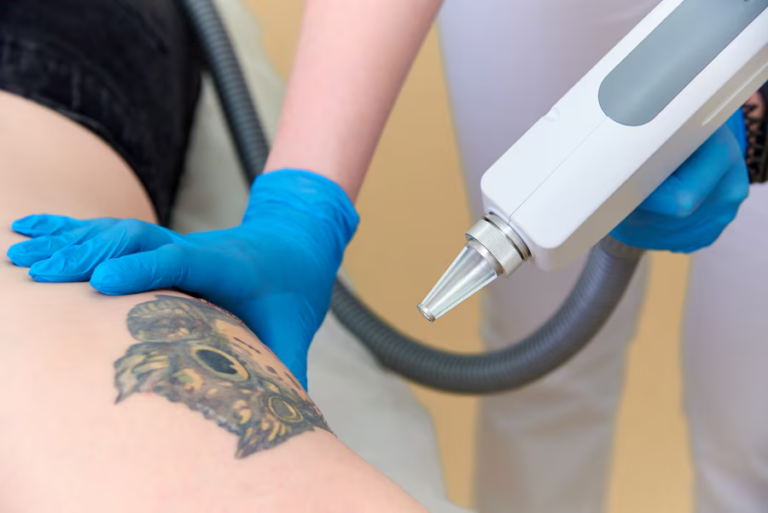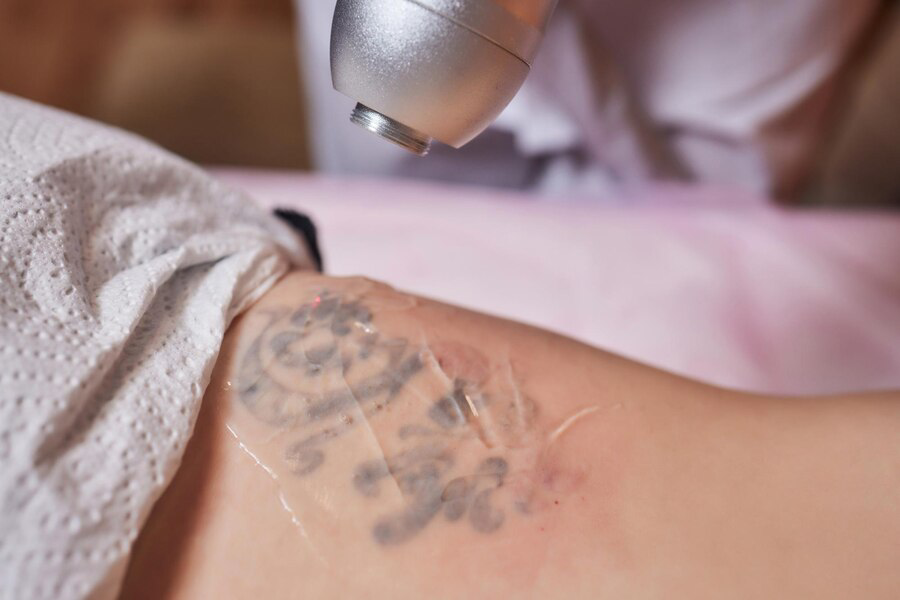In recent years, tattoos have surged in popularity as a form of self-expression and artistry. However, as tastes and circumstances change, so too do our feelings towards the ink etched into our skin. This shift in sentiment has led to a growing demand for tattoo removal procedures. But not all removal methods are created equal. Understanding the different types of tattoo removal techniques is crucial for anyone considering this journey. From traditional methods like surgical excision and dermabrasion to modern advancements such as laser removal and intense pulsed light (IPL) therapy, each approach offers unique benefits and considerations. Factors such as tattoo size, color, and skin type play a significant role in determining the most suitable removal method for an individual. In this comprehensive guide, we delve into the intricacies of various tattoo removal techniques, shedding light on their efficacy, safety, and potential side effects. By gaining a deeper understanding of these methods, individuals can make informed decisions about their tattoo removal journey.
How to Choose the Right Tattoo Removal Method for You
Removing a tattoo is a significant decision, and choosing the right method can make all the difference in achieving the results you desire. With various tattoo removal techniques available today, each with its own set of pros and cons, it’s essential to understand your options thoroughly. In this guide, we’ll delve into insider tips to help you navigate the process and select the most suitable tattoo removal method for your unique needs.
Assessing Your Tattoo
Before diving into tattoo removal options, take a close look at your tattoo. Factors such as size, color, age, and location on your body can influence which removal method is best suited for you. For instance, larger tattoos may require multiple sessions and could be more effectively treated with laser removal.
Research Different Methods
Familiarize yourself with the various tattoo removal techniques available, such as laser removal, surgical excision, dermabrasion, and creams. Each method works differently and offers distinct advantages and drawbacks. Understanding how each method works will help you make an informed decision.
Consultation with Professionals
Schedule consultations with experienced tattoo removal specialists or dermatologists. They can assess your tattoo and skin type, discuss your goals, and recommend the most suitable removal method for you. These professionals can also provide valuable insights into the expected outcomes, potential side effects, and aftercare requirements for each method.
Consider Your Skin Type
Your skin type plays a crucial role in determining the success and safety of tattoo removal. Some methods, such as laser removal, may be more effective and safer for certain skin types than others. Make sure to discuss your skin type and any concerns with your chosen removal specialist to ensure the best possible outcome.
Evaluate Treatment Cost and Time Commitment
Tattoo removal can be a significant investment of both time and money. Consider the cost of each treatment session, as well as the number of sessions required for complete removal. Additionally, factor in the downtime needed for recovery between sessions, especially for more invasive removal methods like surgical excision.

Exploring Tattoo Cover-Up Techniques: Concealment Options and Considerations
Tattoo cover-up techniques offer a way to camouflage unwanted tattoos without resorting to removal. From strategic placement to creative designs, various methods can effectively conceal tattoos and provide a fresh canvas. In this guide, we’ll explore the different cover-up options available, along with key considerations to help you choose the best approach for your needs.
- Strategic Design Placement: A skilled tattoo artist can incorporate the existing tattoo into a new design, strategically placing elements to conceal the old tattoo while creating a cohesive and visually appealing composition.
- Color Matching and Contrast: Choosing the right colors and contrasts is crucial for successful cover-ups. Darker shades of vibrant colors can effectively mask underlying ink, while complementary hues can blend seamlessly with the original tattoo.
- Custom Design Solutions: Work closely with your tattoo artist to develop a custom design that effectively covers the existing tattoo while reflecting your personal style and preferences.
- Size and Scale Considerations: The size and scale of the new tattoo design should be carefully planned to ensure complete coverage of the old tattoo while maintaining balance and proportion on the body.
Unpacking Surgical Tattoo Removal: Understanding the Procedure and Risks Involved
Surgical tattoo removal is one of the oldest methods for eliminating unwanted tattoos. Unlike non-invasive techniques such as laser removal, surgical excision involves physically cutting out the tattooed skin tissue. While it can be an effective option for certain cases, it’s crucial to understand the procedure thoroughly, along with its associated risks. In this comprehensive guide, we’ll delve into the intricacies of surgical tattoo removal, exploring how it works, who it’s suitable for, and the potential risks involved.
How Surgical Tattoo Removal Works
Surgical excision entails removing the tattooed skin tissue using a scalpel or surgical blade. The surgeon cuts around the edges of the tattoo, completely removing the inked area. The remaining skin is then stitched together to close the wound. This method is typically performed under local anesthesia to minimize discomfort during the procedure.
Suitability for Different Tattoo Types
Surgical removal is most effective for small to medium-sized tattoos, particularly those with well-defined borders. It may not be suitable for larger tattoos or those covering extensive areas of the body, as removing large sections of skin can result in significant scarring and deformity. Additionally, tattoos located on areas with minimal skin laxity, such as the hands or feet, may be more challenging to remove surgically.
Preparation and Consultation
Before undergoing surgical tattoo removal, patients are required to undergo a thorough consultation with a qualified surgeon. During this consultation, the surgeon assesses the tattoo’s size, location, and characteristics to determine if surgical excision is the appropriate treatment option. Patients are also advised on pre-operative care instructions and what to expect during and after the procedure.
Procedure Details
On the day of the surgery, patients are typically administered local anesthesia to numb the treatment area. Once the anesthesia takes effect, the surgeon begins the excision process, carefully cutting around the tattooed skin tissue. The depth of the incision depends on the depth of the tattoo ink within the skin layers. After removing the tattoo, the surgeon closes the wound with stitches or sutures.
Recovery and Aftercare
Following surgical tattoo removal, patients are advised to follow specific post-operative care instructions to promote proper healing and minimize the risk of complications. This may include keeping the treated area clean and dry, avoiding strenuous activities, and taking prescribed medications as directed. Patients may experience swelling, bruising, and discomfort during the initial recovery period, which typically lasts a few weeks.
Conclusion
Delving into the world of tattoo removal methods unveils a plethora of options, each with its own advantages and considerations. From the time-tested laser treatments to emerging techniques like chemical peels and surgical excision, individuals seeking tattoo removal now have a variety of choices tailored to their preferences, budget, and skin type. It’s crucial to research thoroughly and consult with professionals to determine the most suitable method for achieving desired results safely and effectively.
For further inquiries or to schedule a consultation, feel free to reach out to Lotus Healthcare And Aesthetic located in Panama City, Florida, at (850) 252-6161. Our expert team is dedicated to providing personalized solutions and guidance on your journey to tattoo removal.



